
Confederate Napoleon at Petersburg National Battlefield, Battery Five
This Confederate 12-Pounder Napoleon may be seen at Battery 5 at Petersburg National Battlefield. A copy of the registry in my possession says that Augusta Number 22 (cast in 1863) was at the battery circa 2000.
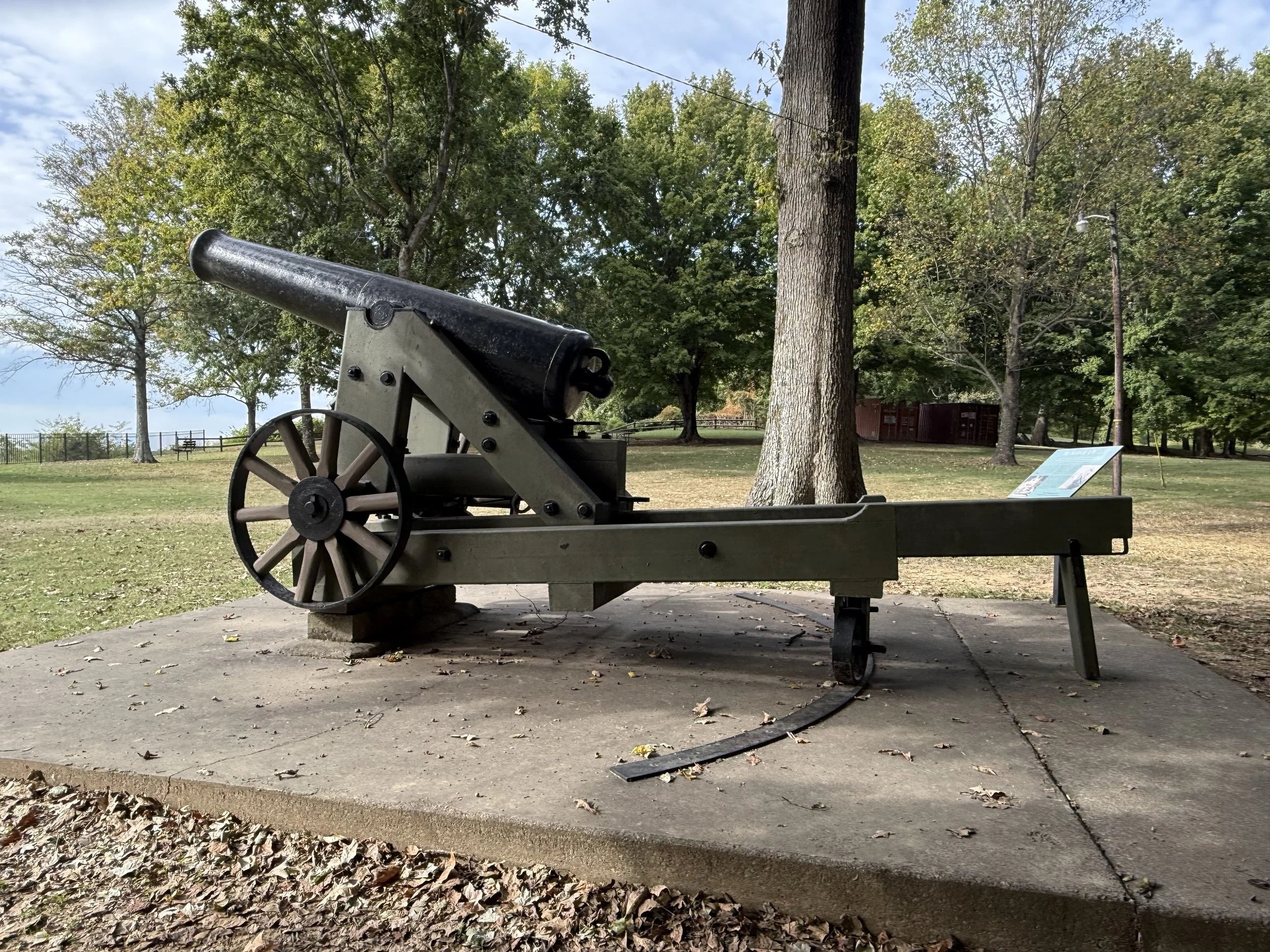
US Army 32-Pounder, Pattern 1829, at Columbus-Belmont State Park
US Army 32-Pounder, Pattern 1829, Number 209 cast by Fort Pitt Foundry in 1839 is displayed at Columbus-Belmont State Park in Columbus, Kentucky. As manufactured it weighed 7,545 pounds. The State Park is the site of the Confederate Fort De Russey which was commanded by General Leonidas Polk who called the works the “Gibraltar of the West.”
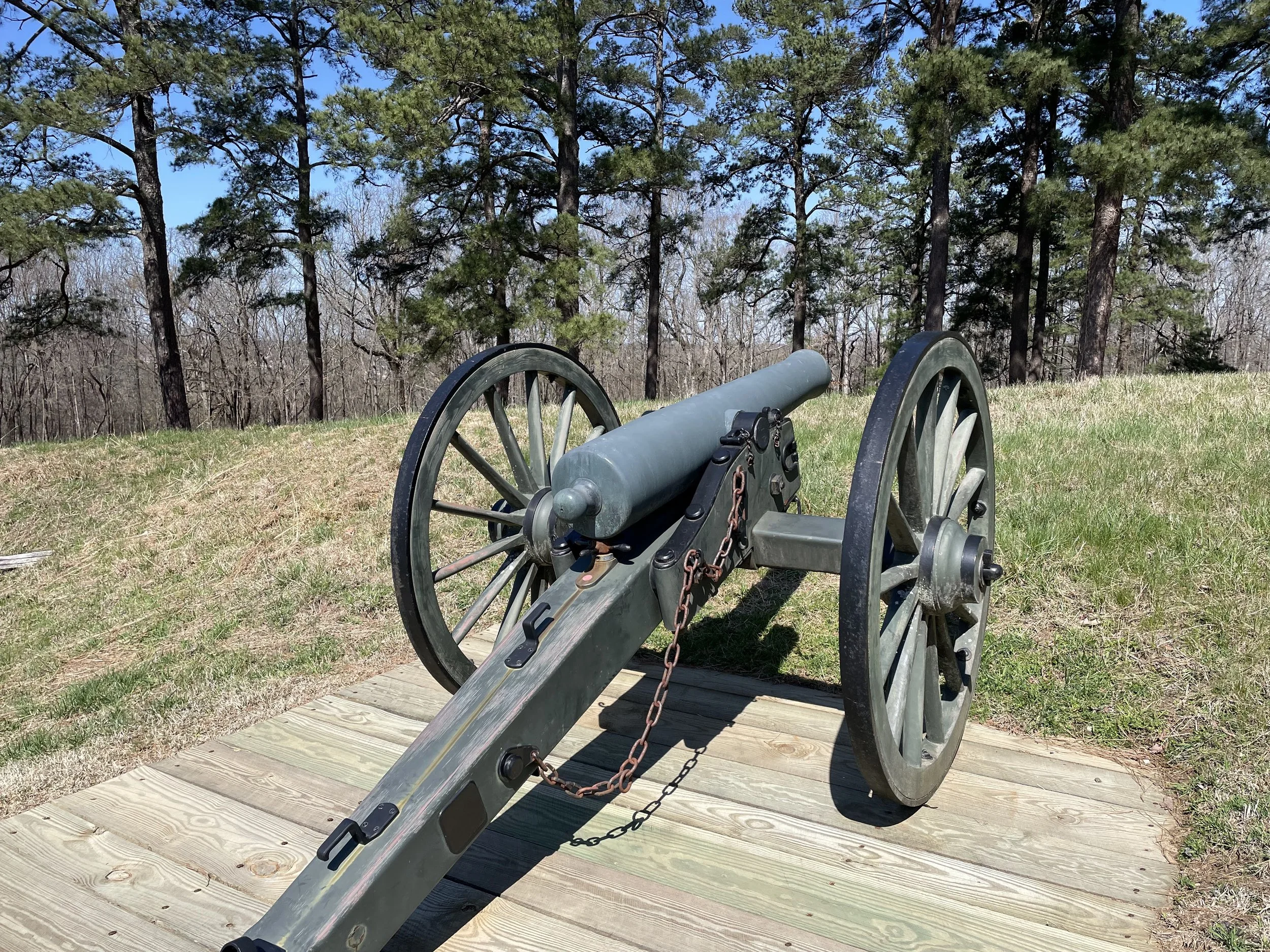
Leeds and Co. Napoleon Number 19 at Petersburg National Battlefield
Among the many interesting artillery pieces at Petersburg National Battlefield is the earliest surviving Napoleon manufactured for the Confederacy. This Napoleon made by Leeds and Company of New Orleans is displayed at Battery Number Five within walking distance of the visitors center. (It is marked with the Leeds and Co. Foundry Number 19.)
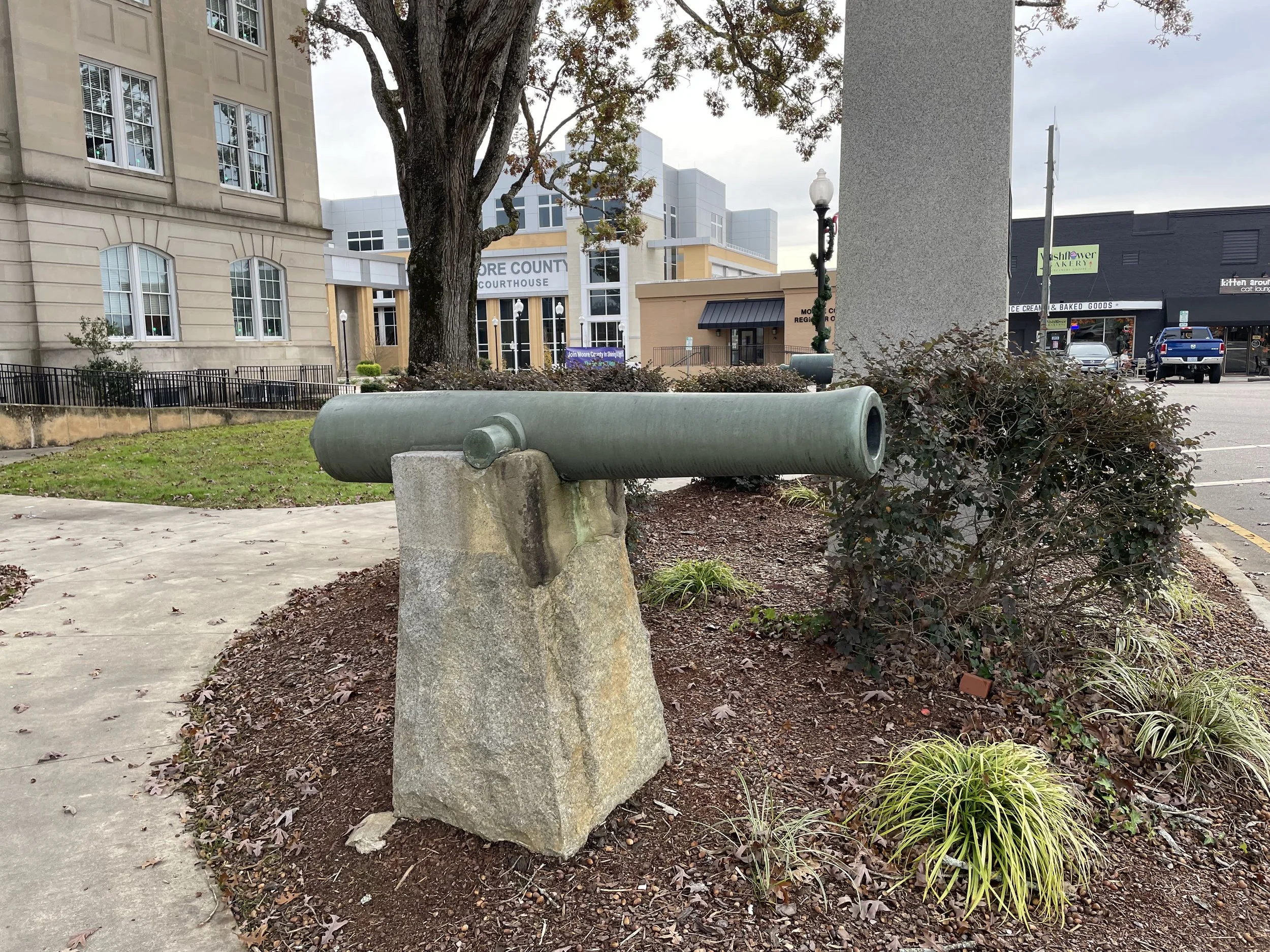
The Napoleons of Carthage, North Carolina
Two Napoleons (12-Pounder Field Gun-Howitzers of the American Civil War) flank a monument to James Roger McConnell, pilot of the Lafayette Escadrille, in Carthage, North Carolina outside of the historic former Moore County Courthouse.

Iron, Banded 6-Pounders in Joliet, Illinois
Two smoothbore iron banded six-pounders that the registry identifies as of probable Confederate manufacture are displayed beside a G.A.R. Memorial in St. Peter Lutheran Cemetery in Joliet, Illinois today at a GAR Memorial. Many thanks to friend of the page Mike Clennon for sharing these photos!

The Breechloading Rifle of Columbus
This little breechloading rifle was manufactured in 1863 by engineer W.J. McAllister using the wheel shaft of the sunken riverboat John C. Calhoun at the Columbus Naval Ironworks Company. Warren Ripley measured the bore at 2.75 inches. Ripley also gives the length overall as 61.25 inches, though he states that this doesn’t include the breechblock link (pg. 181).

The US Army 24-Pounders, Pattern 1819, at Fort Branch
Two US Army 24-Pounders, Pattern 1819, are among the extraordinary collection of original cannons at Fort Branch near Hamilton, North Carolina. Along with the other cannons, they were thrown into the Roanoke River to prevent capture at the end of the American Civil War. All of the cannons were recovered from the Roanoke River in the 1970s.

32-Pounder of 57 Hundredweight at Vicksburg
A US Navy 32-Pounder of 57 Hundredweight is displayed on “Cannon Row” at Vicksburg. It’s form present state points to an active career. It was cast as USN Registry Number 647 by Bellona Foundry near Richmond in 1849. During the Civil War it was rifled and banded by the Confederates. It’s muzzle was damaged and then shortened.
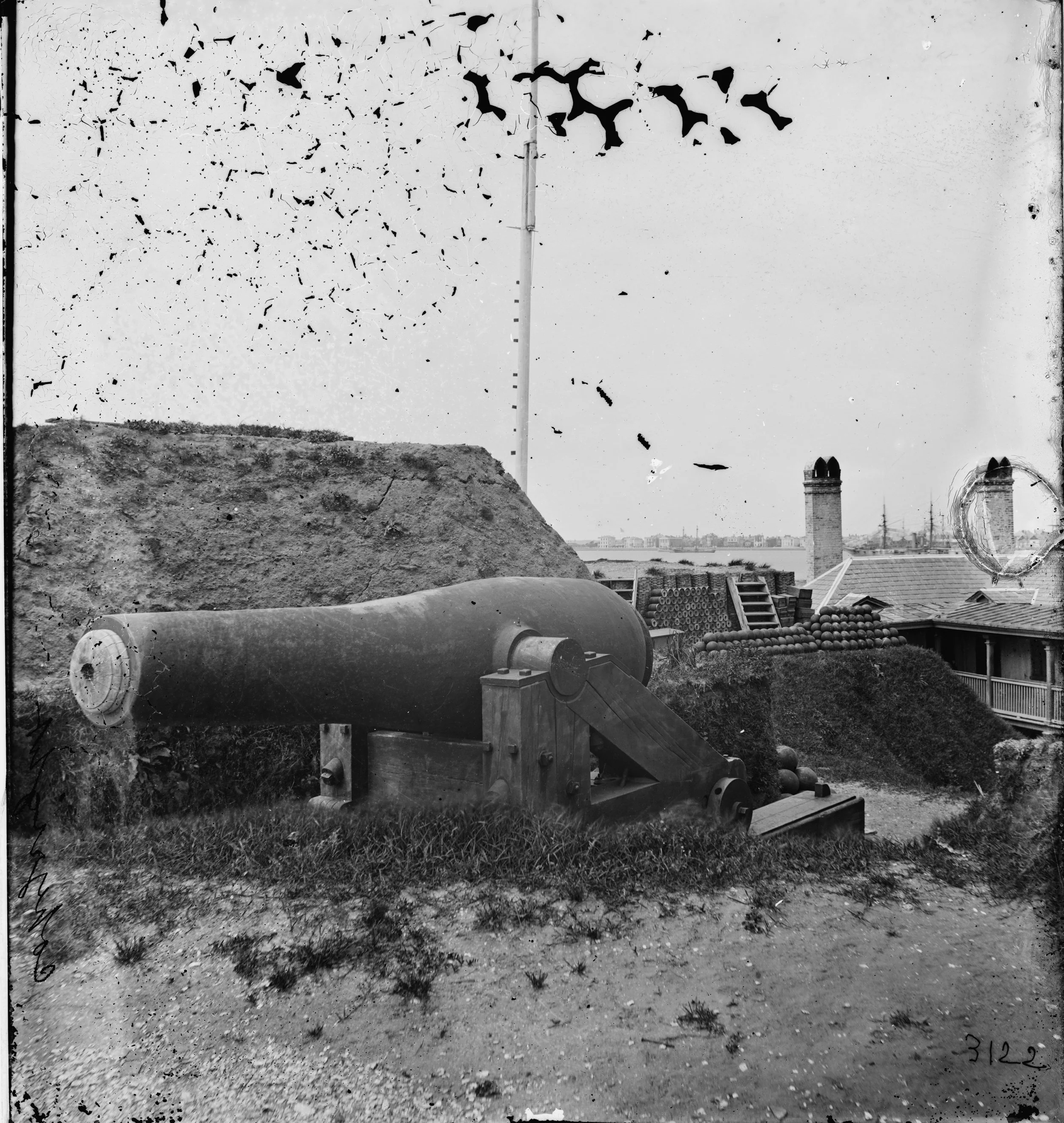
Photographs of Surviving Confederate Columbiads
This post includes photographs of the majority of surviving Confederate Columbiads. The Columiad, particularly the 10-Inch Model, was one of the most powerful heavy cannons available to the Confederacy, and this type of cannon was in high demand anywhere the US Navy might strike.
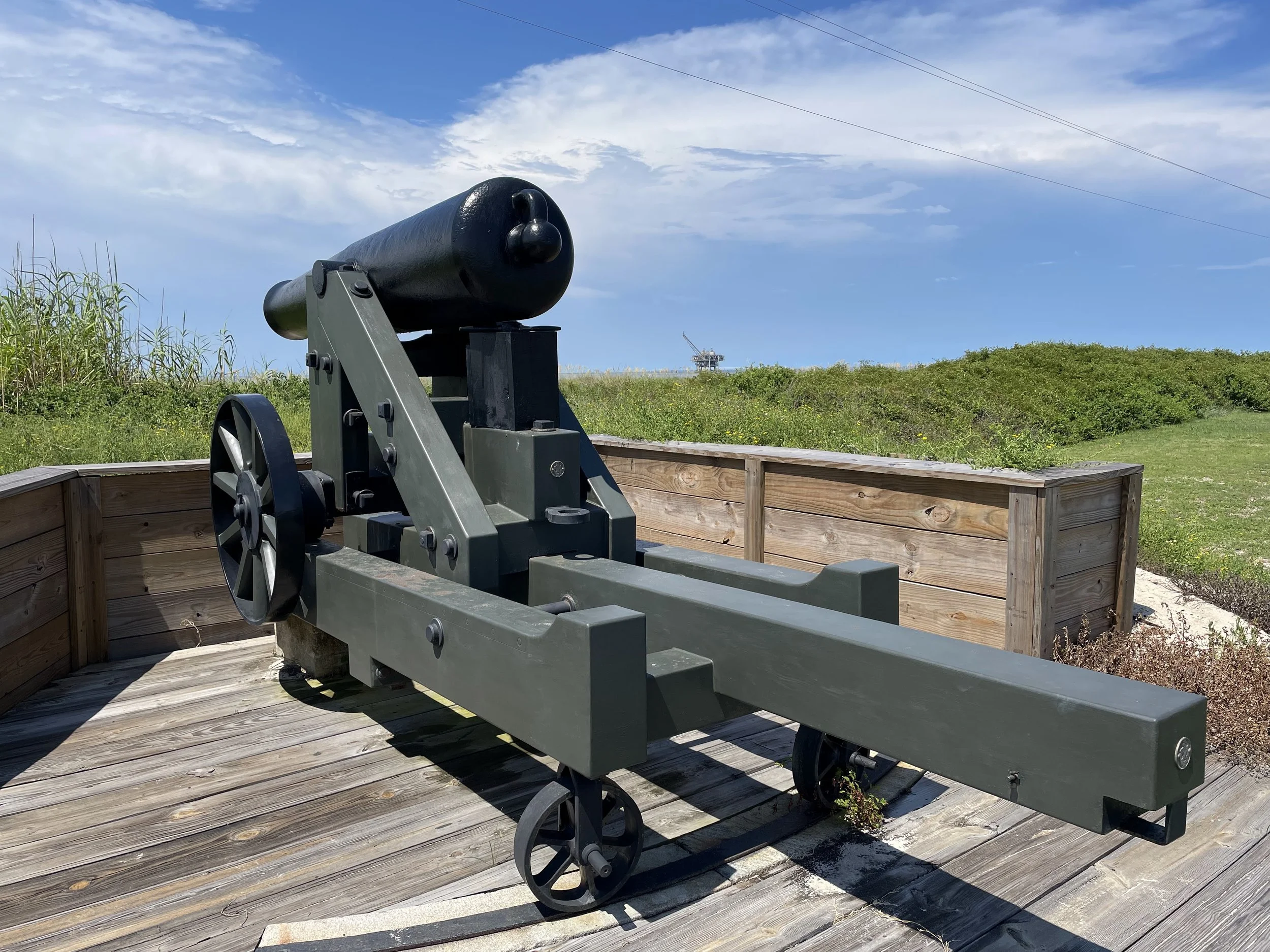
32-Pounder, Pattern 1829, at Fort Morgan
A US Army 32-Pounder, Pattern 1829, is displayed at Fort Morgan in Alabama. This cannon was cast at Fort Pitt Foundry in 1833. It is Fort Pitt registry number 116. It bears a test scar on its muzzle face. It is displayed at Fort Morgan in an emplacement overlooking Mobile Bay. It’s weight is 7,478 pounds.
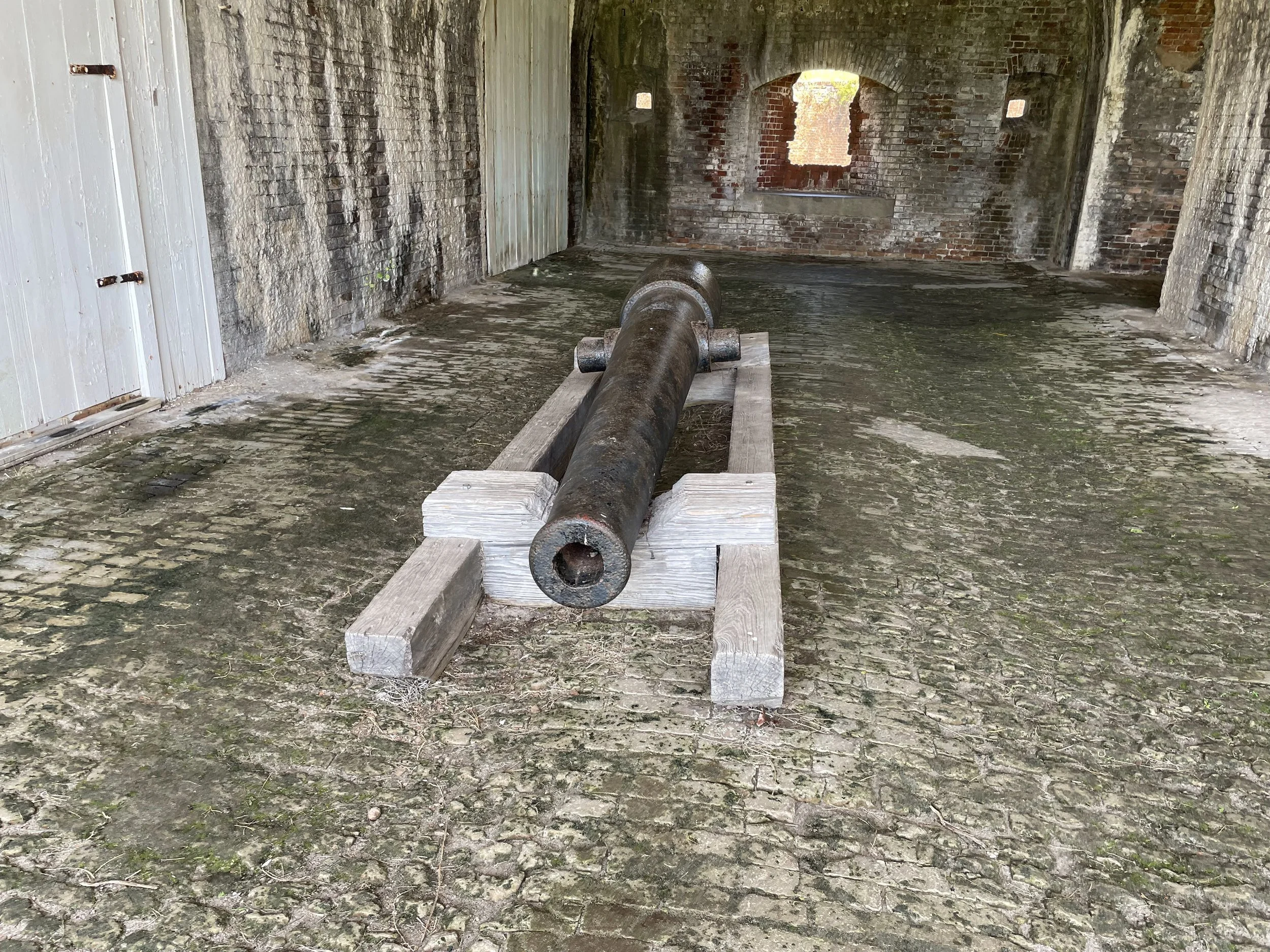
CS Army 30-Pounder “Parrott” Rifle at Fort Morgan
A 30-Pounder (4.2-Inch) Rifle manufactured by Tredegar (Richmond, Virginia) in 1862 is displayed at Fort Morgan. The rifle is resembles the US Army Parrott Rifle. The rifle’s breech was blown off at some point. The missing breech allows the bore to be seen from the breech - and it is roughly and inch off-center.
Like the US Army Parrott Rifle, this is a cast iron cannon with a wrought iron reinforcing band over the breach.

10-Inch Columbiad at South Fort in Vicksburg
A 10-Inch Confederate Columbiad is displayed at South Fort at Vicksburg National Military Park. This Columbiad was cast at Bellona Foundry near Richmond in 1863. It is marked as weighing 13,800 pounds. It is marked on its right trunnion “BF, JLA” for Bellona Foundry, Junius L. Archer (the proprietor).
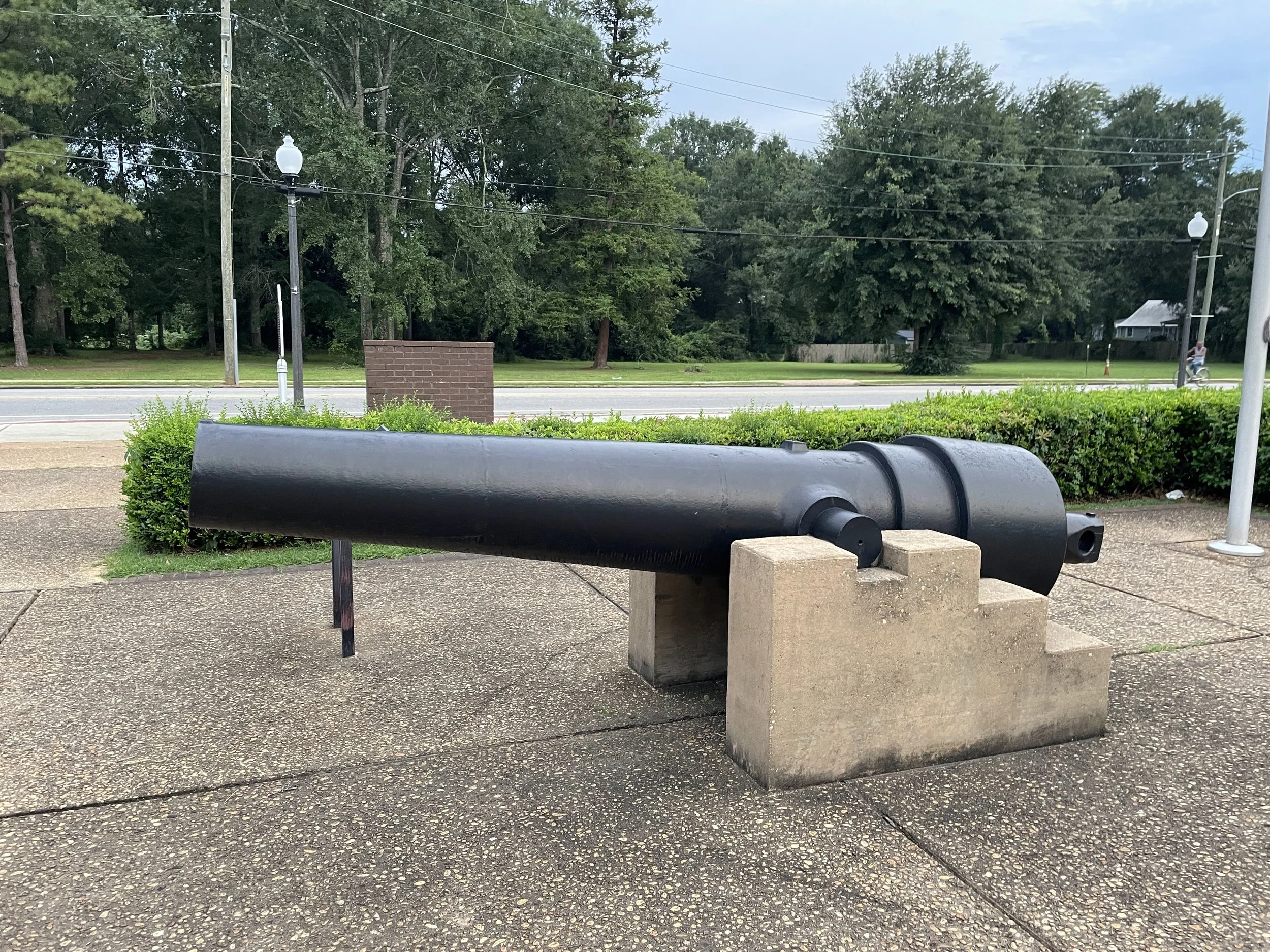
The 6.4-Inch Brooke Rifle of Jackson, Alabama
A 6.4-Inch Brooke Rifle cast at Selma in 1864 is displayed at Jackson, Alabama. It was cast on August 9th, 1864 and delivered to Mobile on December 21st, 1864 (see Daniel & Gunter, pg. 83). According to the historical marker placed next to the cannon, S96 was mounted at Oven Bluff on the Tombigbee River.

The 7-Inch Brooke Rifle of Fort Morgan
7-Inch Double Banded Brooke Rifle "S89" is displayed at Fort Morgan, Alabama. Cast at Selma, Alabama in July of 1864, it was delivered to Mobile in January of 1865. A nearby interpretive sign explains that it was mounted in a fortification north of Mobile. It is stamped with its "as manufactured" weight of 14,800 pounds.
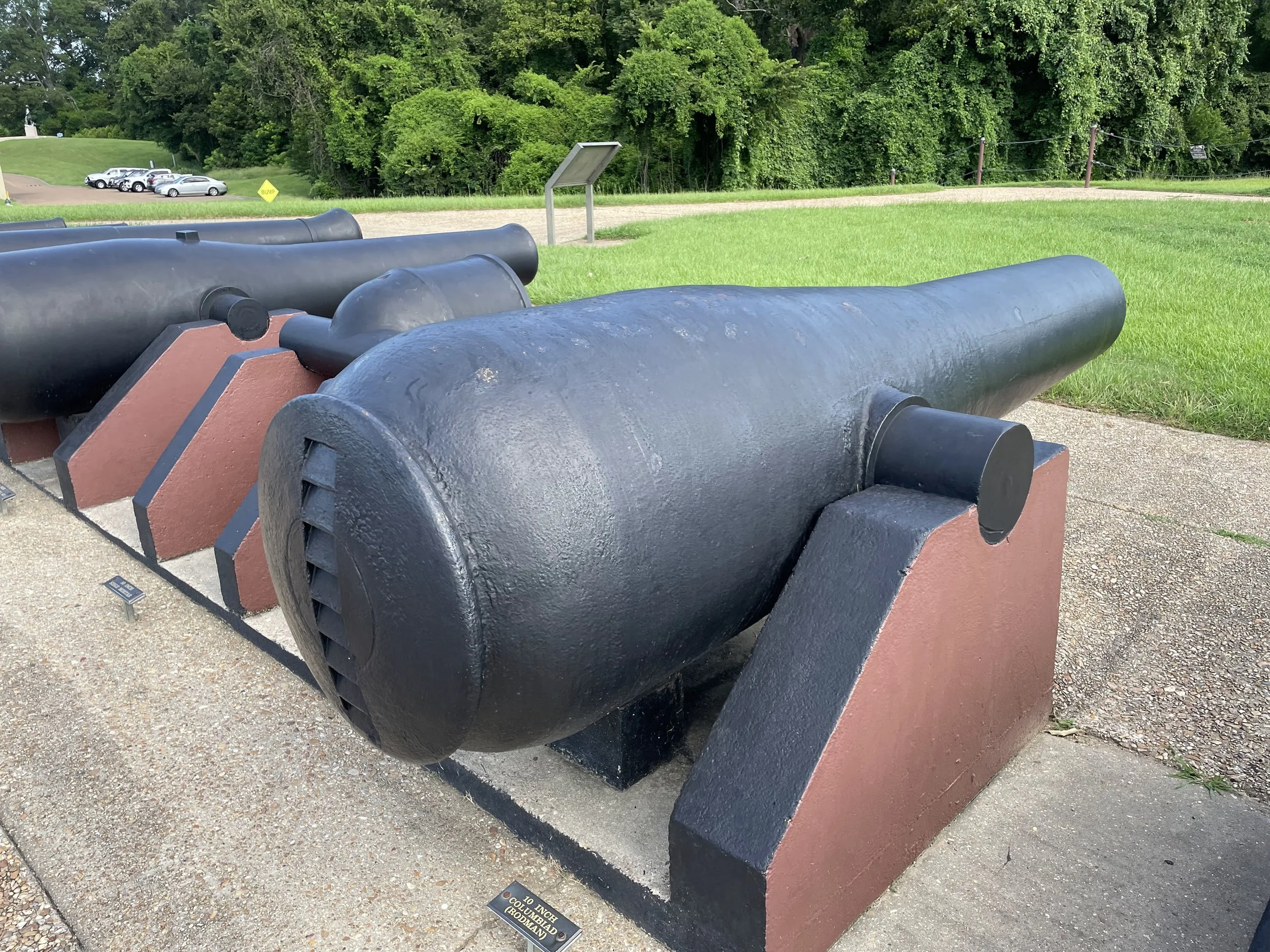
10-Inch Confederate Columbiad, Bellona Number 4, at Vicksburg
A 10-Inch Confederate Columbiad, Bellona Foundry Number 4, is displayed at “Cannon Row” near the Visitor’s Center at Vicksburg National Military Park. This Columbiad was cast by Bellona Foundry near Richmond, Virginia in 1862. It’s original weight was 13,800 pounds.

8-Inch Brooke Smoothbore, S-26, at Gainesville, Alabama
An 8-Inch Double Banded Brooke Smoothbore, S26, manufactured at the Selma Naval Gun Foundry in 1863-1864 may be found beside the Old Cemetery in Gainesville, Alabama. S26 was cast as a 6.4-Inch Brooke Rifle. According to Messers Olmstead, Stark, and Tucker, S26 was one of three blocks (raw castings) intended to be produced as 6.4-inch rifles which encountered difficulties during machining but were successfully salvaged as 8-inch smoothbores. S26 is the only survivor of the three Selma produced 8-Inch Brooke Smoothbores.

9-Inch “Confederate Dahlgren” at Vicksburg
A 9-Inch Naval Shell Gun cast at Bellona Foundry in 1862 is displayed behind the Mississippi Monument at Vicksburg. This shell gun generally follows the shape of US Navy 9-Inch Dahlgrens and may be called a “Confederate Dahlgren.”
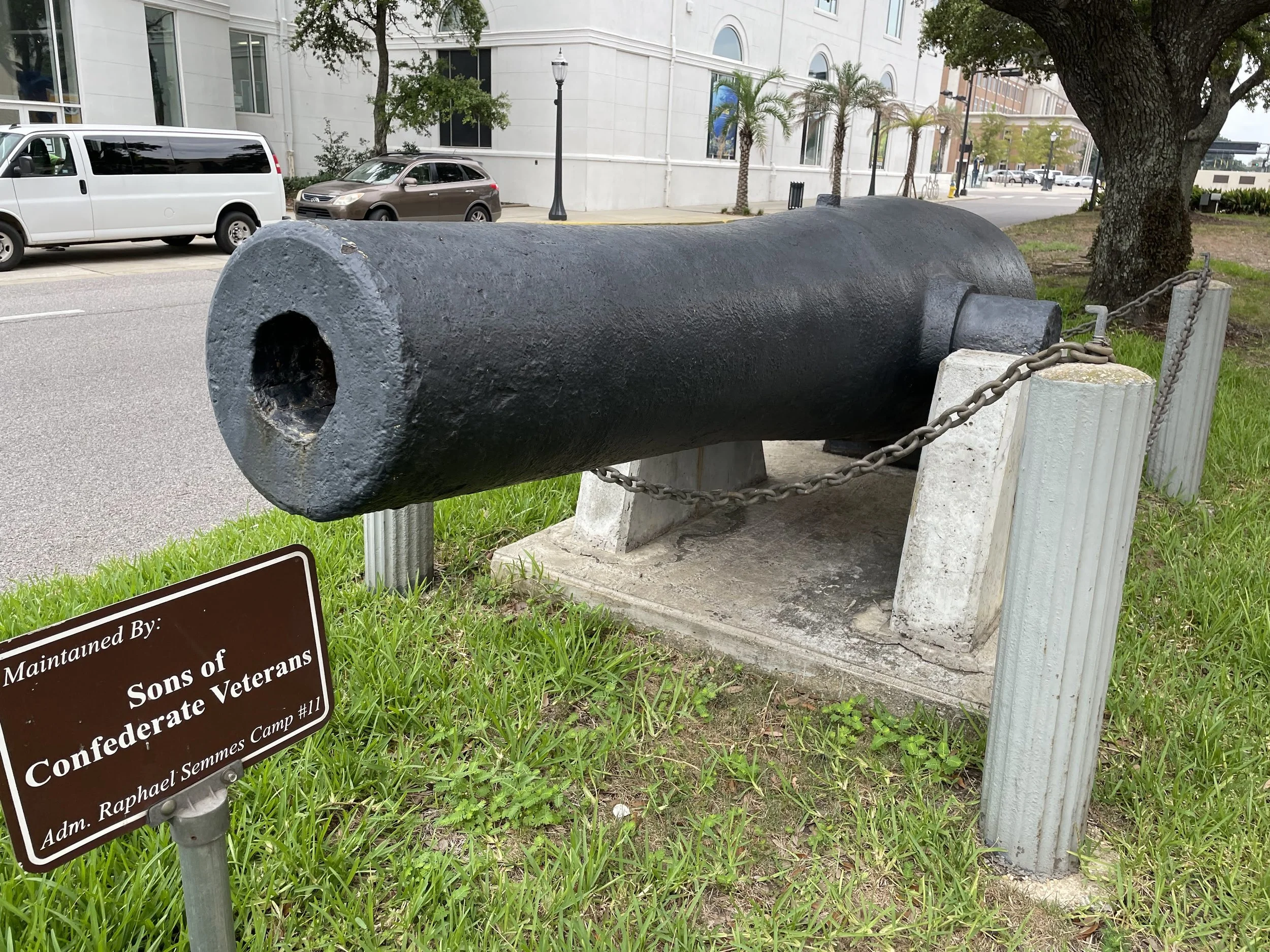
The 6.4-Inch “Columbiad Rifle” of Fort Powell in Mobile
A 6.4-Inch Rifle which in all respects besides its smaller, rifled bore resembles and was made from a 10-Inch Confederate Columbiad may be found in downtown Mobile, Alabama. The cannon was salvaged from the site of Fort Powell which guarded the Mississippi Sound entrance to Mobile Bay.
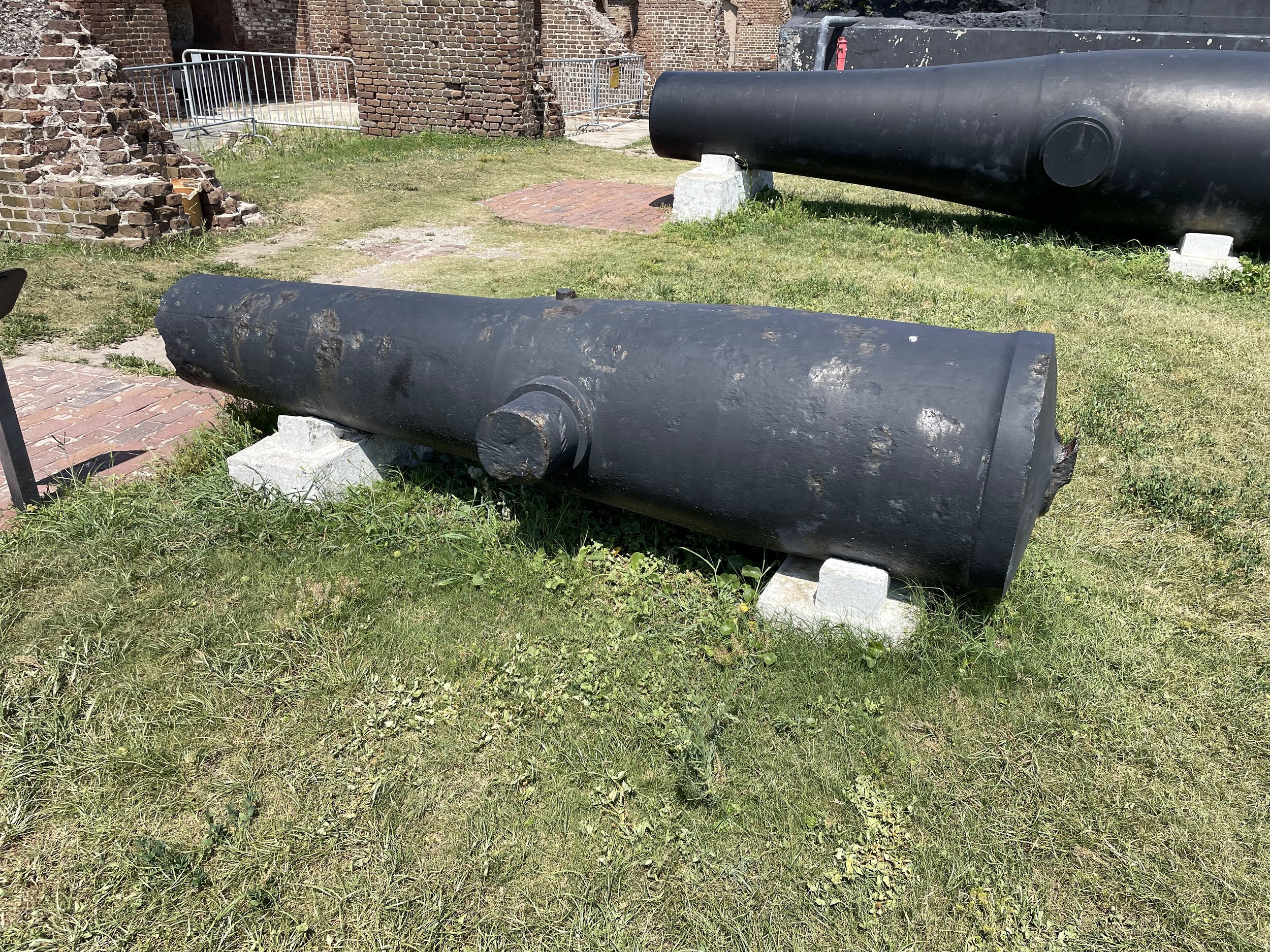
The 8-Inch Columbiad, Pattern 1844, of Fort Sumter
The US Army 8-Inch Columbiad, Pattern 1844, looks almost insignificant at Fort Sumter as it rests between two gargantuan 50,000 pound 15-Inch Rodmans which were brought to the fort in the 1870s. The smaller Columbiad is missing a portion of its muzzle, its right trunnion, and much of its cascabel. It's not mounted on a carriage like the cannons in the casemates. An interpretive sign notes that several of the type were present at the fort in 1861 and that this cannon probably has remained there since then.
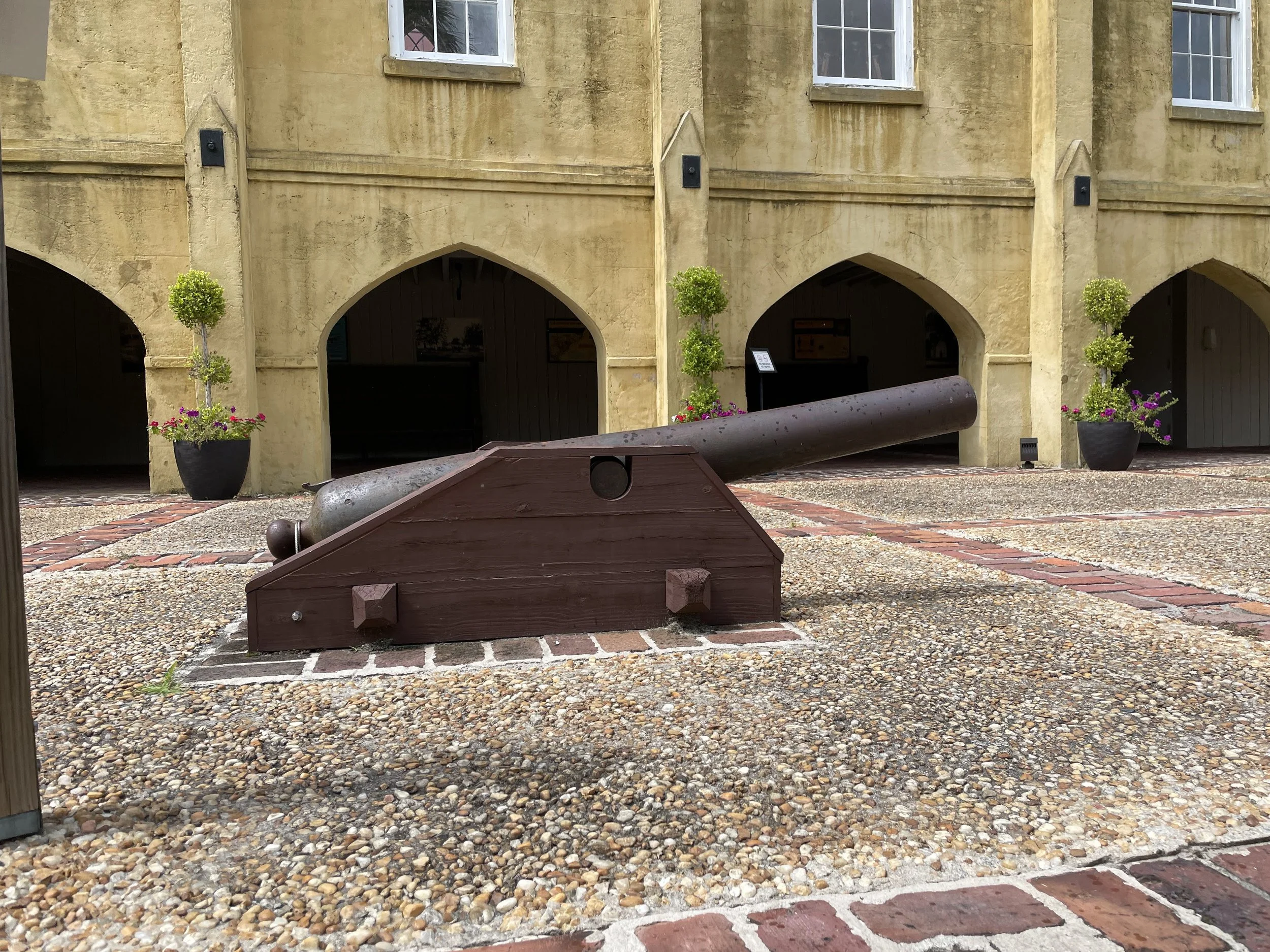
Blakely and Ordinance Rifle at the old Beaufort Arsenal
A US Army 3-Inch Ordnance Rifle (left) and a 3.5-Inch Blakely Rifle are displayed at the Old Beaufort Arsenal in Beaufort, South Carolina. The two cannons are:
3.5-Inch Blakely marked "Blakely's Patent, No. 50, Fawcett, Preston, & Co., Liverpool, Makers, 1862. Ripley categorized this Blakely as a “Type 4”.
US Army 3-Inch Ordnance Rifle Number 265 manufactured in 1862 at the Phoenix Iron Company.